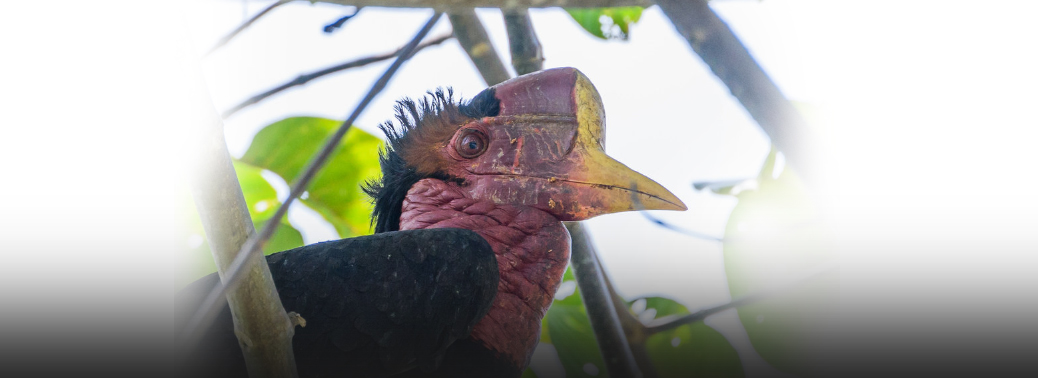HORNBILLS AMONG TOP SEED DISPERSERS, MOST THREATENED
19, May 2019

Prelims level : Bio Diversity
Mains level : Conservation, environmental pollution and degradation, environmental impact assessment.
Why in News:
- The study carried out in Pakke Tiger Reserve in Arunachal Pradesh noted that hornbills, one among the large-sized frugivores, are the top seed dispersers.
Details:
-
They are classified as most threatened. This is because they are hunted for meat, and the tribal communities use their feathers for head dresses.
The trees were classified into small, medium, and large-seeded. - The large-seeded trees mainly depended on hornbills and imperial pigeons for their dispersal.
- The medium-size seeded trees were visited by bulbuls, barbets along with hornbills and imperial pigeons. Though the frequency of visits was similar for all four bird species, the number of fruits removed from trees was high for hornbills.
- Among the different bird species, hornbills were found to be the most effective seed dispersers. They were found to swallow and disperse most of the fruits they handled.
- They swallow the fruit as a whole causing no damage to the seed. They are known to disperse seeds far away from the parent plant and study have shown that they can disperse up to 13 km.
- Seeds that fall under the parent tree face heavy competition, predation by rodents and insects and fungal infections. So their chances of survival are very low. Plants depend on frugivore birds to disperse the seeds at favourable sites, which have low competition and predation pressures, to expand their geographic range.
- The decline of frugivores could severely affect the ecosystem.
Great Hornbill (Buceros bicornis)
- Near threatened category in IUCN Red List State
- bird of Kerala and Arunachal Pradesh
- Local names are homrai(Nepal), banrao, Vezhaambal They are Long-lived, living for nearly 50 years in captivity It is Found in the Indian subcontinent and Southeast Asia.
- Predominantly frugivorous, but is an opportunist and will prey on small mammals, reptiles and birds.
Hornbill festival
- Hornbill festival is the largest indigenous festival and an annual event of the Nagaland government to promote tourism.
- The festival is celebrated annually in the first week of December in order to encourage inter-tribal interaction and to promote the culture of Nagaland, preserve, protect and revive the uniqueness and richness of the Naga heritage.
- The practice of celebrating hornbill festival by the state government was started in the year 1963.
- The festival is considered the “Festival of festivals” in Nagaland.
- The festival is a colorful mixture of religious ceremonies, food fairs, sports, games, parades, crafts, performances, dance etc.
Hornbill festival exposes the culture and tradition of the tribal people and reinforces the
identity of the Nagaland state as a unique one in India’s federal union. - It has become a unique platform to witness the cultural diversity, not only for the Nagas and the people of the other seven sisters in the North Eastern region but also the tourists from various parts of the country and the world to witness the cultural diversity.






